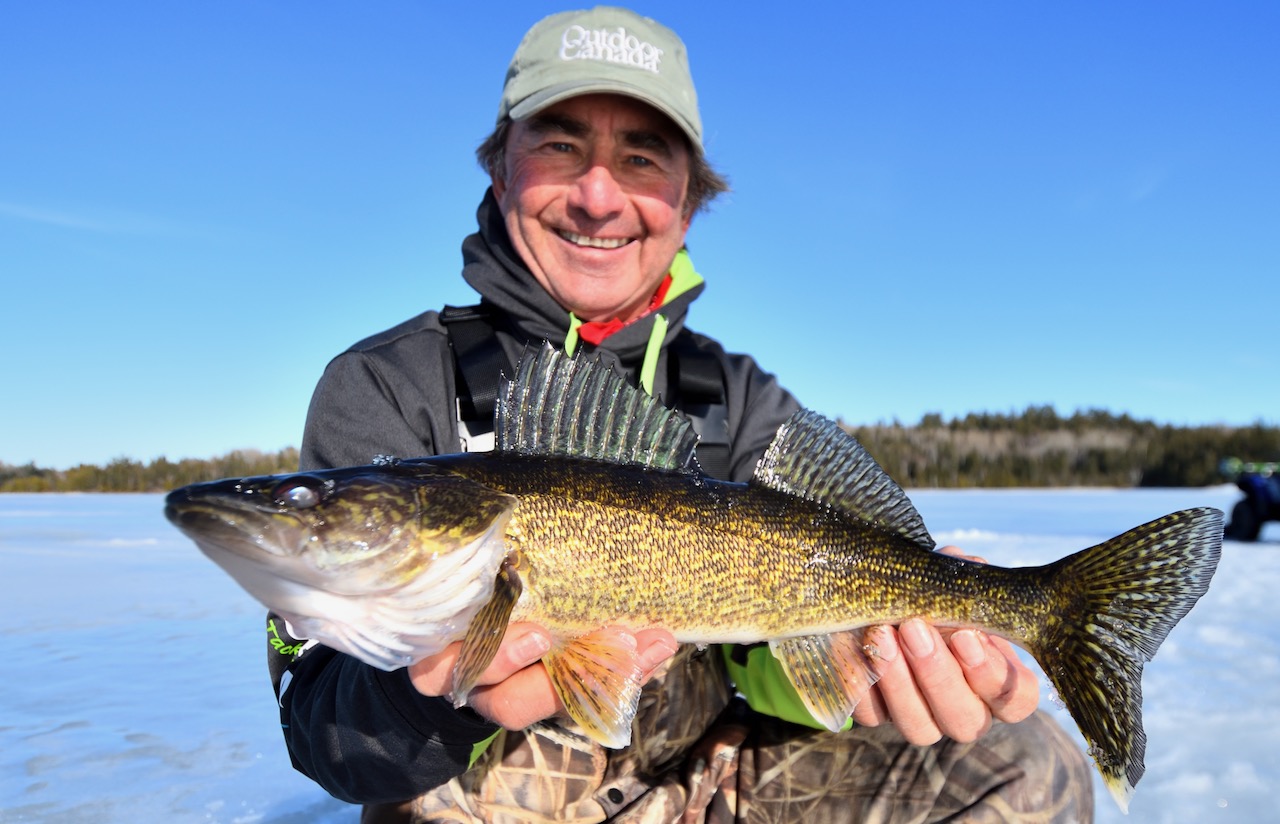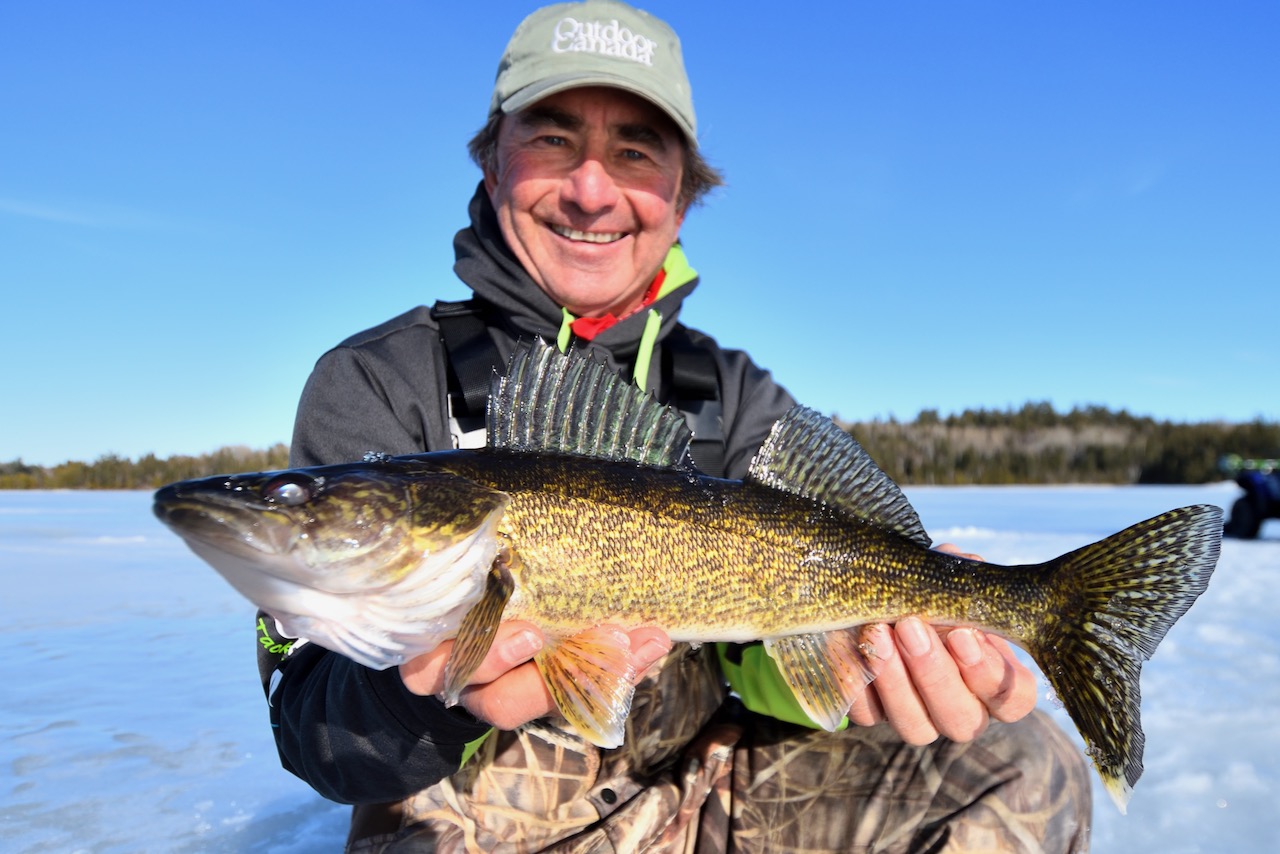OFFBEAT BITES
Two unconventional patterns for catching more winter walleye
Advertisement
The more I ice fish for walleye, the more I come across fish appearing to behave unusually, which in turn leads to special angling opportunities. For example, I’ve hauled big ’eyes through the ice in waist-deep water—water so thin you could envision the fish rubbing their dorsal fins against the underside of the ice. On the flipside, I’ve also caught King Kong-sized walleye out in the middle of the water column. They stick out like solitary bounty hunters on the trail of would-be-dinner items, smashing baits when you put them in front of their faces.
But what are these behemoth walleye doing in these seemingly strange locations? Are they rogues, or members of gangs that have long roamed the icy netherworld in ghost-like fashion? For answers, I turned to walleye expert Nick Baccante, who served as the lead biologist in the Ontario government’s Walleye Research Unit.
Advertisement
IN SHALLOW
First, I asked Baccante why anglers sometimes find winter walleye in such skinny water. “Walleye movement into shallow water under the ice has been well-documented,” he told me. “It is usually the result of groundwater seepages that maintain a water temperature above 4°C that stimulates feeding.”

So, even though shallow shoreline water is typically the coldest and least hospitable for winter walleye, Baccante explained, the warm seepages raise the temperature to 5°C or 6°C, prompting the fish to feed. “We’re not talking about feeding rates similar to the summertime,” he noted, “but on a relative scale in the winter, when you don’t expect much feeding, it can happen.”
Advertisement
I then mentioned that some of my best shallow-water winter walleye action takes place on muddy flats next to marshy areas, where slush on top of the ice gives away the presence of warmer water below. According to Baccante, that happens due to heat generated by the decomposition of vegetation below the ice. You sometimes don’t get total freezing, he said, because there are little crevices where water can seep through. “If you get a little warm water seepage into these cold areas, fish are going to detect the temperature differences.”
Ironically, my grandson Liam and I stumbled upon this pattern some years ago while hanging a dead bait under a tip-up for northern pike. Talk about a surprise when it was eaten instead by a gorgeous black-and-yellow, wide-eyed walleye. After it happened a second time, though, a light went on and we started presenting Jigging Rap-style baits closer to shore. We haven’t looked back since, and now often set out a tip-up for pike while jigging a second hole for walleye—our biggest to date was a near 10-pounder.
Advertisement
OUT DEEP
Now, what about those high-flying walleye that think they’re lake trout? They’re amazingly agile and nothing like the sluggish belly-to-the-bottom walleye that most anglers envision. Turns out you’ll find them out in the middle of the water column if ciscoes are also present.
“We know what a valuable food source ciscoes can be, so it’s not surprising that walleye will stay close to them,” confirmed Baccante. “It may also happen that the ciscoes and walleye are seeking out similar habitats. If ciscoes are in the mix, walleye will definitely seek them out.”
Once again, I was fishing with Liam when we likewise happened upon this suspended walleye pattern. We weren’t even pursuing walleye at the time, but instead hunting 18- to 22-inch ciscoes, which are so much fun to catch (they’re also delicious when smoked, and they make incredible baits for northern pike). Nonetheless, big walleye kept hammering our spoons now and again.
Based on that experience, we now go to the well-defined pockets of water that bottom out at 30 to 35 feet and jig small spoons in the upper 20-foot portion of the water column. My two favourite spoons for this tactic are a silver-and-gold Williams Nipigon (above left) and a rainbow trout-coloured #00 Mepps Syclops (above right).
For targeting both ciscoes and walleye, the ideal set-up is a 32- to 42-inch, medium-action ice rod and reel, spooled with eight- to 10-pound braid with a 30-inch leader of six- to eight-pound monofilament. Expect to catch four or five ciscoes, then—wham!—have a walleye obliterate your spoon. As Baccante concluded, “I’d be surprised if you looked in a large walleye’s stomach and didn’t find bits of cisco.”


